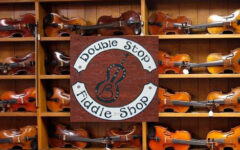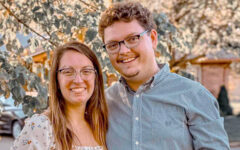
For many years, Tom Adams was at the top of the heap in the banjo world. He spent a few years honing his skills with Jimmy Martin, but it was his work with The Johnson Mountain Boys that made five string fans first sit up and take notice. Tom also worked with Rhonda Vincent & The Rage, The Lynn Morris Band, Michael Cleveland & Flamekeeper, and Blue Highway before a problem with his right hand caused him to set the banjo aside more than 10 years ago.
At first Tom simply noticed that occasionally, the middle finger on his right hand would fail to respond when he meant for it to pluck the 1st string. In other words, his brain would send the signal to go, but the finger didn’t react. As it occurred more frequently, he sought medical attention, and received a diagnosis of focal dystonia, a nervous system disorder that essentially causes a short circuit on tasks that are repeated frequently.
Adams’ diligence in becoming a professional musician is what in the end threatened his career. He never lost the ability to pick the banjo, but he couldn’t guarantee that every note would be played – unless he was playing very slowly. So he was able to continue to teach banjo lessons, but didn’t want to perform at less than full strength.
Eventually, he switched to playing guitar in bluegrass groups, which caused him no trouble whatsoever, even at full speed. The dystonia was quite specific in its application.
Currently, Adams is performing with Springfield Exit as their banjo player (in 2 finger style), along with David and Linda Lay, Marshall Wilborn, and David McLaughlin.
But now Tom has an opportunity to participate in a study with an experimental treatment regimen that he hopes will return much of his right hand control. It is being conducted expressly with musicians suffering from focal dystonia at Mt. Sinai Hospital in New York City by a pair of distinguished neurologists. It involves injections of Botox, and while results are uncertain going in, there is the possibility of regaining up to 90% of his lost effectiveness on banjo.
The costs of the injections and followup evaluations are covered by the study, but not the travel and other associated costs of getting to New York to participate. So friends have established a GoFundMe account in an attempt to raise the roughly $6,000 estimated to be required. They are slightly more than halfway there, with hopes of reaching the goal by mid-February when Adams would make the first of ten trips to the hospital in New York.
Monies raised would cover his Amtrak fare to and from Baltimore, an overnight stay in New York, and the loss of two days wages from his students.
Anyone who had enjoyed Tom’s playing in the past, with a hope of hearing it again, should be happy to make a donation towards this effort.
Donations can be made securely online using PayPal or a major credit card.
Good luck, Tom!







